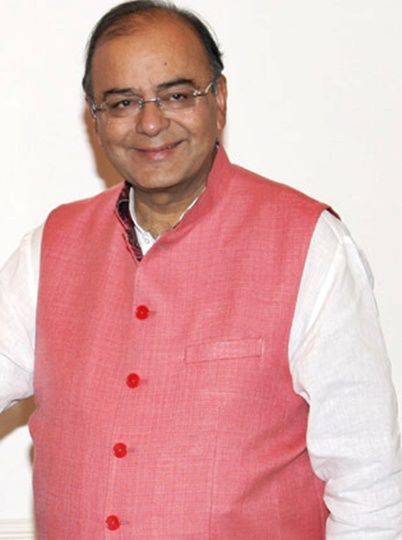Getting the balance between fiscal restraint and growth-contracting policy remains a problem, notes Abheek Barua.

I want to begin my column by expressing my usual dismay at the way the television channels are hyping up the February Budget and the way some otherwise hard-nosed industrialists and chief executives are swinging to their tune.
Let me repeat my usual sermon. First the Budget is, has been and will be principally an accounting exercise, one of the most notoriously uncool aspects of all human endeavour. There is a limit to which, despite the array of camera angles that the march of technology has made possible, things can be (to use Tony Blair's immortal words) "sexed up" to notch up television ratings.
Second, the Budget is not the sole repository of the government's policies for the year. In that sense, no Budget is "make or break" to quote the phrase du jour. There are the 12 months of 2015 -16 to make or break this government, either through critical policy announcements or their absence.
But let me turn to more substantive issues. For this, I am going to rely heavily on the numbers crunched by my bright young ex-colleague Jyotinder Kaur of HDFC Bank ("Growth versus austerity - which way will the government go?", India Focus, January 16, 2015).
To begin with, the run rates of the fiscal numbers do look a little alarming. The April-November 2014 fiscal deficit adds up to around 99 per cent of the full-year target. However, if one considers the fact that the percentage for the previous year was 94 per cent, things don't look that bad after all. 
There is a clear seasonal pattern to the way the deficit develops over the year - the mix of revenues and expenditure is likely to turn more favourable this quarter.
However, seasonality aside, there is clearly a problem. Somewhat predictably, this has to do with a massive shortfall in tax revenue. For the April-November period, it grew by a meagre 4.3 per cent (against a budgeted growth rate of 20 per cent) and it is unlikely that the numbers in year-on-year terms would have improved dramatically in the following month.
The finance ministry's department of economic affairs' calculations attribute this to two factors - an overestimation of tax buoyancy when the Budget was announced and a lower-than expected nominal gross domestic product (GDP) growth.
Their estimate of tax revenue shortfall for the year is a hefty Rs 1.05 lakh crore. Add to this the possible shortfall in divestment proceeds and spectrum auctions and voila, meeting the target for the year seems well-nigh impossible.
However, it would be remiss to ignore the things that will lend Arun Jaitley succour. For one thing, both oil and food subsidies are likely to be lower than budgeted, courtesy the fall in global crude oil prices and the fact that the food security programme is unlikely to be rolled out. 
The increase in excise on oil products and heftier dividends from the public sector companies and the Reserve Bank of India than was budgeted in June will also help.
That said, pruning the fiscal gap down to the target will need further expenditure reduction and capital (particularly Plan spending) is likely to go on the chopping block.
In short, the risk of willy-nilly getting the fiscal arithmetic right at the cost of setting off a "contractionary" impulse (the United Progressive Alliance's model of fiscal management) lurks yet again. Ms Kaur argues that the impact on growth of a last quarter pullback in capital spending might be more muted than last year.
For one thing, the central government's mix of revenue and capital expenditure for the first two quarters has been much better than in previous years - that is, more government money has gone into creating assets instead of day-to-day expenses.
The effects of this will linger in the economy. Besides, states have been spending more on consumption expenditure than in the past years (this is apparent from the minutiae of central government accounts and the quarterly national income statistics). This consumption stream could continue to flow.
In short, there are some "growth buffers" that are in place that could ensure growth of over six per cent in the coming year despite pruning investment spending.
To the extent that the Budget embeds a macroeconomic strategy, it might be useful to assess the best possible fiscal response up to the set of "givens that currently prevail". The first "given" is the now widely acknowledged fact that public expenditure will have to lead the investment cycle.

The second and related "given" is that the public-private partnership model in the avatar that we know it seems unworkable. There is little private interest in the execution and implementation of a project but apparently enormous interest at the operation and maintenance stage of these facilities (including from purely financial investors like pension funds).
Thus, the government might stand to gain by creating infrastructure facilities and then selling it down to interested private parties at appealing valuations.
This presents both an interesting financial engineering problem and problem of inter-temporal choice that our fiscal mandarins need to grapple with. Is it possible, through an appropriate financial vehicle, to raise funds for the execution stage against assured cash flows at the operating stage of the facility?
Does it also make sense to stray off the fiscal-consolidation path at the current stage in return for more rapid consolidation in the future by selling these assets down?

Finally, some gentle caveats for the fiscal tyro. Public expenditure is not entirely funded by the Budget.
Public sector undertakings can raise funds and get projects going in key sectors, like power, without seeking help from the exchequer (without adding to the fiscal gap).
Both their internal and extra- budgetary resources (equity, bonds, bank loans et al) can fund projects. However, for their success, the government has to work carefully to remove the various barriers that have stood in their way in the past few years.
Finally, the idea of ring-fencing divestment funds for capital spending (referred to as an asset swap by some) will certainly help but how much of it can realistically be ring-fenced will depend on how much space the rest of the Budget allows. For this to work, we need both an aggressive divestment programme and a major compression of the revenue deficit. Back to basics then.
The writer is a consultant at Icrier, New Delhi. These views are his own.









